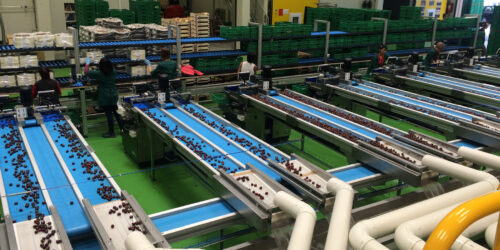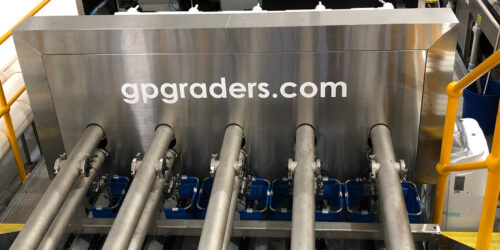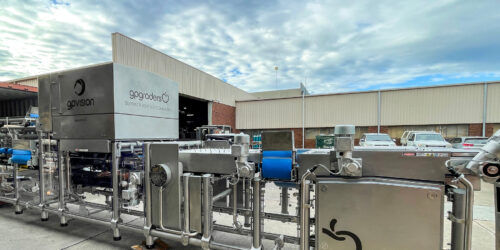We’re proud to partner with so many exceptional agricultural businesses, enhancing the overall productivity and excellence of the fresh produce industry globally.
- 1 December 2022
- gpgraders
- No Comments

Fruit Grading Q&A with Stuart Payne
With over 30 years of personal experience in the industry, extensive knowledge in exporting and a passion for innovation and progress, we posed some questions to our company director, Stuart Payne, to gain some valuable insights about current fruit grading innovations and developments.
1. Why has vision grading of fresh produce had such prolific growth over the last 20 years?
Since the Industrial Revolution and for centuries thereafter, we have sought to replace the human hand with mechanisation, to remove laborious roles with machinery. This current revolution, Industry 4.0 and IOT (Internet of Things) seeks to replace the human mind. These advancements have been driven by massive changes in automation thanks to inventions in the technology sector and the exploitation of very smart software.
Vision analytics is just one element of this modern march to complete automation. And to be clear, automation means the removal of the human element, to take people out of the equation.
We’re a part of that bigger automation picture, manufacturing machinery to automate the processes of fresh produce packing house operations.
The ultimate aim is to achieve a “lights out” packing facility which is completely unmanned aside from machinery operators.
2. What do you see as being the most important factor when considering automated grading solutions for a business?
Replacement of labour with an “as good” or better solution. Best if it is an integrated solution with other machinery elements which runs off a single control, otherwise known as HMI (Human Machine Interface).
Automation can include a myriad of better solutions than employing manual labour including a batch traceability and labelling system which removes manual counting and reconciliation, robotic arms to pack trays and palletise boxes, additional conveyor to remove or reduce forklift movement, vision electronics to remove sorting and inspection staff, automated bin tippers, re-wiring machinery and adding singular controls (HMI), buying new machinery compliant with sanitation standards to improve maintenance accessibility thereby reducing downtime and minimising time spent cleaning, etc.
3. What is the most challenging aspect of grading fruit?
Dealing with a naturally grown product outdoors in a variety of growing and climatic conditions means there is an enormous array of potential problems with fresh produce that would mark it down from a market-accepted quality to an unacceptable quality. Having software flexible enough to see and interpret this range of potential quality issues is challenging as defects don’t always fit neatly into defect categories and some problems may be completely unique to that season or variety of produce.
The other very important issue is to create software that is easy to use and intuitive for the operators. Some vision software is simply too hard to understand and use for anyone but a highly trained individual. Ease of use is critical for the user to achieve the best results and for a shared understanding of the operation of the machine within the business.
4. What kind of impact can automated grading solutions make in a packing shed?
While the machinery we build is incredibly advanced, the goals and outcomes we aim to achieve come down three main points:
- Our grading solutions should:
- reduce the overall headcount in the packing shed and hence reduce the cost base per kilo packed.
- increase market prices by separation of grades and selling to multiple markets.
- reduce management, labour safety issues, streamline operations and speed up processes.
5. What significant changes do you see occurring across the fresh fruit industry in the coming years?
The “lights out” packing shed is coming with post-harvest produce being fullyautomated from bin delivery to final consumer pack, to palletising to despatch. Increased use of robotics, particularly arms to tip, pack and stack. HMI with central controls of all machinery in one control room. Removal of forklifts from packing facilities and replaced with automation. Realistically, automation is the absolute future of fresh produce.



